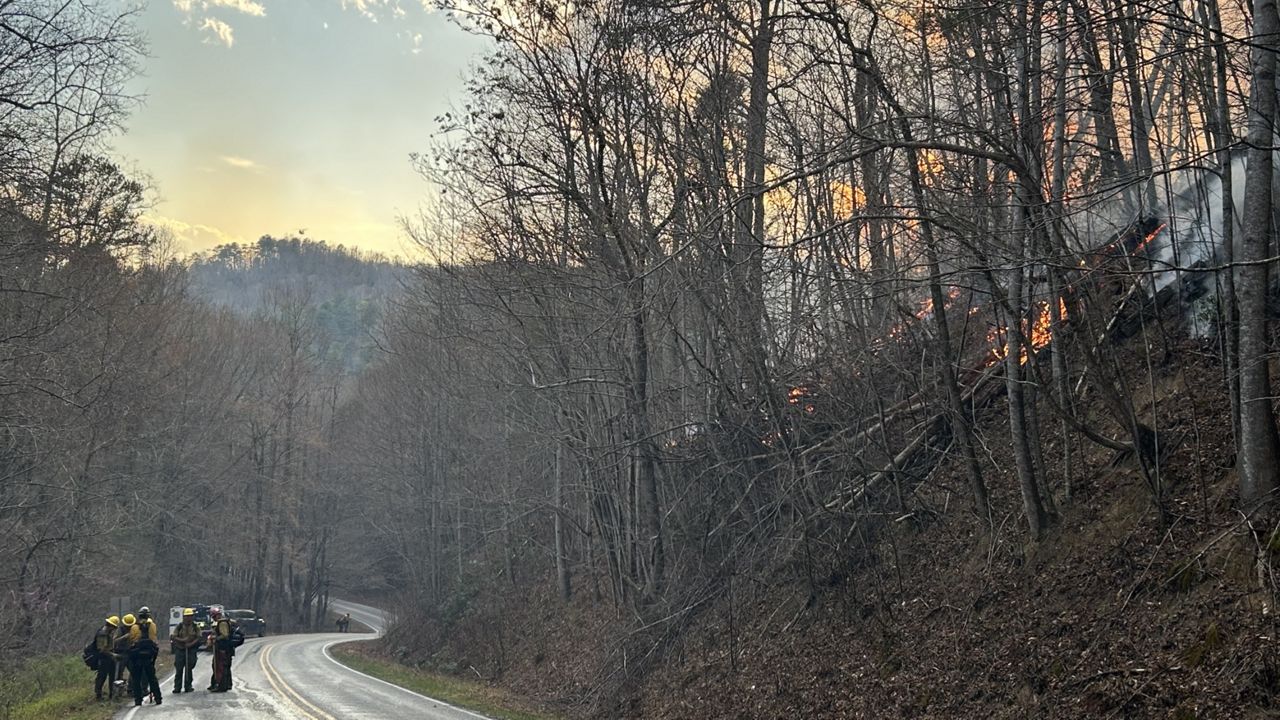As wildfires continue to spread throughout our state, its important to understand air quality levels and take proper precautions to help keep you and your loved ones safe, officials say.
The Henderson County Department of Public Health is urging residents to stay indoors and take precautions, as the county experiences dangerous air quality conditions.
The North Carolina Division of Air Quality has issued a Code Red air quality alert for Henderson County on Thursday, Mar. 27. This means that children, older adults, active individuals and those with heart or lung conditions may experience severe health effects due to elevated pollution levels.
The forecast indicates that air quality may worsen to Code Purple, classified as “very unhealthy.” Under these conditions, everyone is at risk and should avoid outdoor exertion.
Understanding air quality alerts
The Air Quality Index (AQI) is a system used to measure pollution levels and their potential health effects. Here’s what each color means:
Green (Good): Air quality is safe for everyone
Yellow (Moderate): Some sensitive groups may experience minor effects
Orange (Unhealthy for Sensitive Groups): People with heart or lung disease, children and older adults should limit outdoor activities
Red (Unhealthy): Everyone may begin to experience health effects
Purple (Very Unhealthy): Health risks increase for everyone and all outdoor activity should be avoided
Maroon (Hazardous): Emergency conditions—everyone should stay indoors.
Protect yourself from unhealthy air
Stay indoors or limit outdoor exposure as much as possible, especially during Code Red or Code Purple days
Use an air filtration system to reduce indoor pollutants
Keep windows and doors closed to prevent smoke from entering your home
If you have an HVAC system, use high-efficiency filters to clean indoor air
Use air purifiers with HEPA filters if available
Avoid burning candles, using fireplaces or cooking with gas stoves, as they add pollutants to indoor air
Adjust your car’s air settings
Set your air conditioning to “recirculate” mode to prevent pulling in smoky air from outside
Keep car windows closed while driving through smoky areas
Wear an N95 mask outdoors
Cloth masks and surgical masks do not protect against fine smoke particles
If you have to go outside, wear a properly fitted N95 respirator
Check with local retailers or pharmacies for N95 mask availability
Watch for symptoms
Monitor for signs of smoke-related illness including: coughing, throat irritation, shortness of breath, wheezing, dizziness, headaches, chest pain, heart palpitations, fatigue or nausea
Seek medical attention immediately if any of these symptoms worsen and become severe
Stay Informed with Real-Time Air Quality Monitoring
The North Carolina Division of Air Quality (DAQ) provides daily forecasts and live updates through:
The Air Quality Portal – Statewide air quality information
The Ambient Information Reporter (AIR) Tool – Tracks real-time and historical air quality data
The Ozone Design Value Predictor Tool – Tracks design values at monitors across the country
The NC Air Quality Forecast X page
By staying informed and taking these protective measures, you can reduce your exposure to harmful air pollutants and keep yourself and your family safe.











